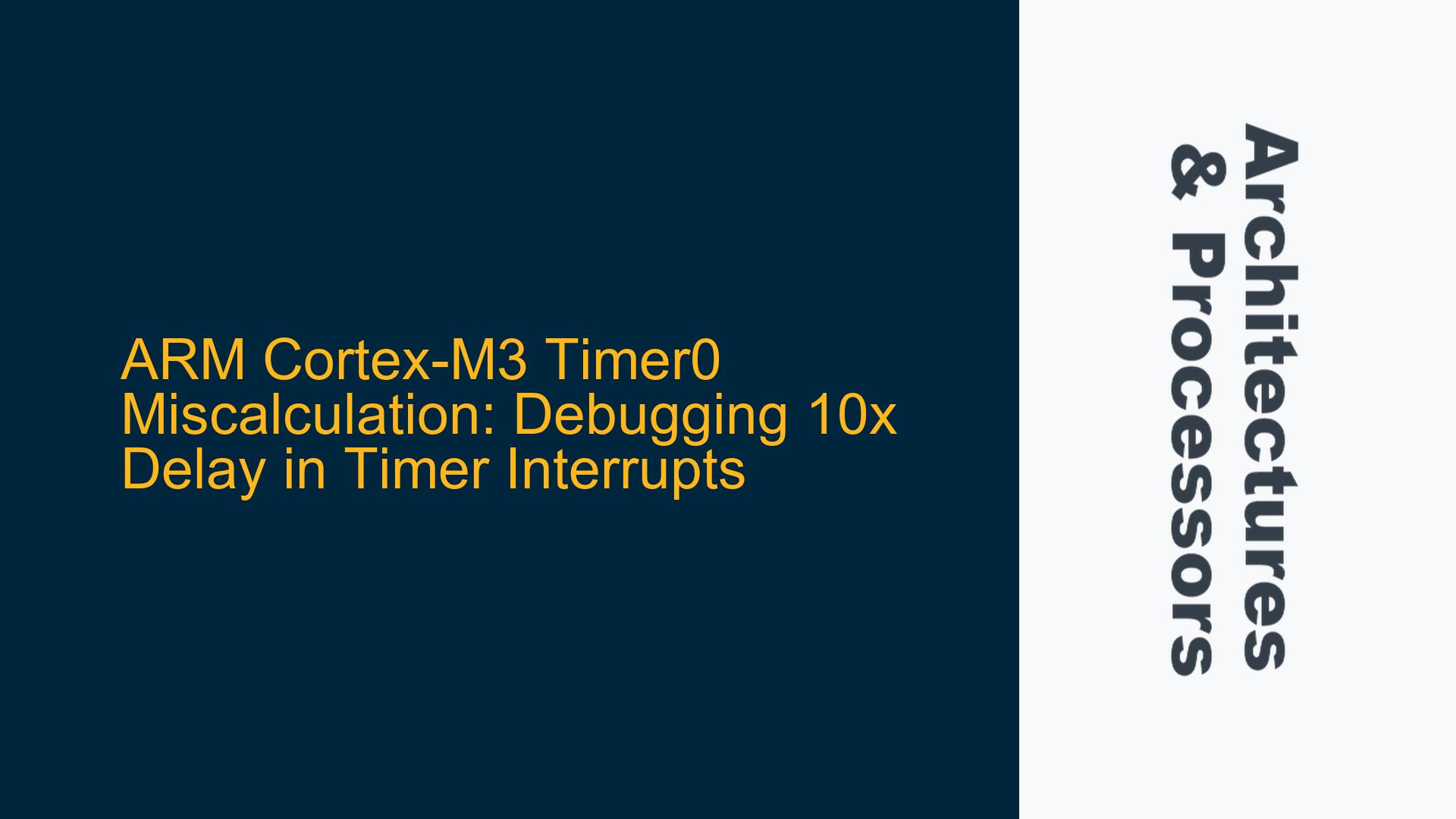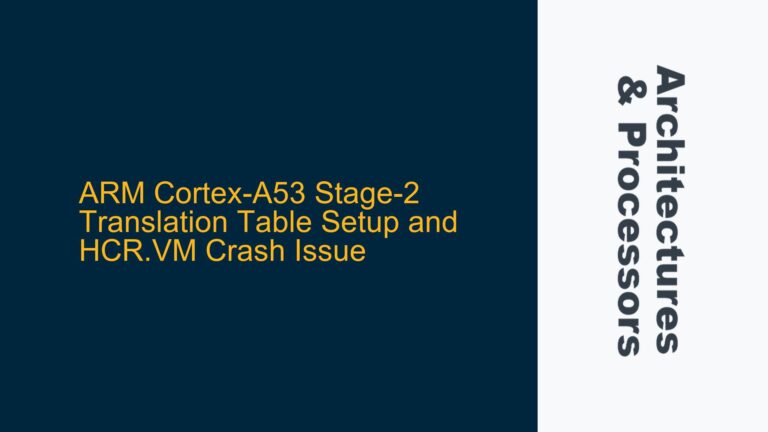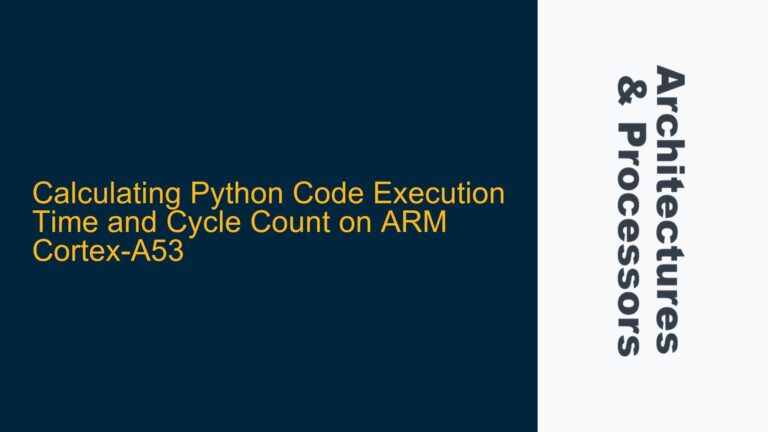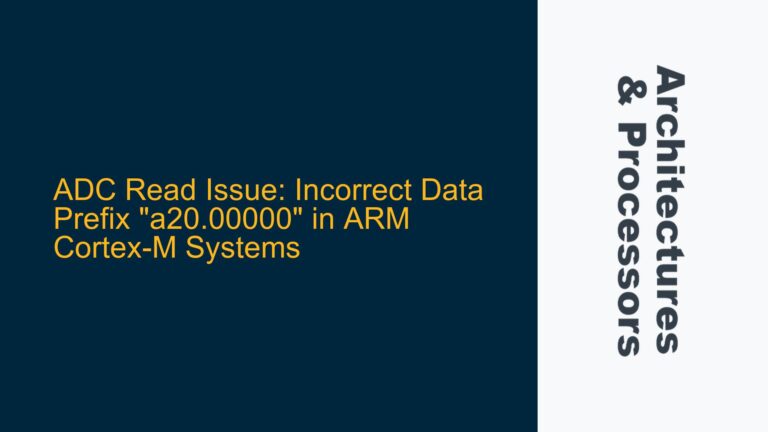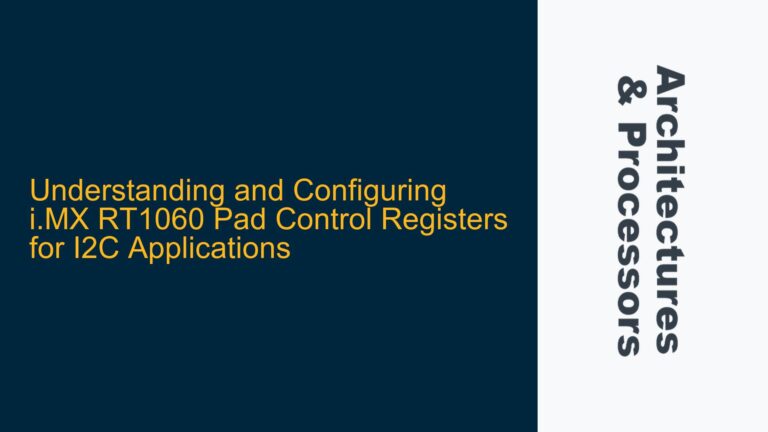Timer0 Configuration and Expected Behavior
The core issue revolves around the Timer0 peripheral on the LPC1768 microcontroller, which is based on the ARM Cortex-M3 architecture. The Timer0 is configured with a master clock source of 12 MHz, which is multiplied to a core clock (CCLK) of 100 MHz using the Phase-Locked Loop (PLL). The peripheral clock (PCLK) for Timer0 is set to CCLK/4, resulting in a 25 MHz clock signal. The Match Register 0 (MR0) is set to 0x17D7840, which corresponds to 25,000,000 counts, theoretically resulting in a 1-second delay before triggering an interrupt. However, during debugging, the observed delay is 10 seconds instead of the expected 1 second. This discrepancy is not present in simulation mode, where the timer behaves as expected.
The Timer0 configuration involves several key components: the clock source, the PLL, the clock dividers, the prescaler, and the match register. The master clock source is the external 12 MHz crystal oscillator. The PLL multiplies this frequency to achieve the core clock frequency of 100 MHz. The peripheral clock divider is set to divide the core clock by 4, resulting in a 25 MHz clock for Timer0. The prescaler is set to 0, meaning no additional division is applied to the peripheral clock. The match register MR0 is calculated as 25,000,000 counts, which should result in a 1-second delay given the 25 MHz clock.
The expected behavior is that Timer0 increments its counter at a rate of 25 MHz, reaching the MR0 value of 25,000,000 after exactly 1 second, at which point an interrupt is generated. However, the observed behavior during debugging is that the interrupt is generated after 10 seconds, indicating that the timer is counting at a rate 10 times slower than expected.
Clock Configuration and Peripheral Clock Divider Misalignment
The most likely cause of the Timer0 counting at a rate 10 times slower than expected is a misconfiguration in the clock settings, particularly in the peripheral clock divider. The LPC1768 microcontroller has a complex clock tree that allows for multiple levels of clock division and configuration. The peripheral clock for Timer0 is derived from the core clock (CCLK) through a peripheral clock divider. If this divider is incorrectly configured, it could result in a slower clock signal being fed to Timer0.
Another potential cause is the prescaler configuration. Although the prescaler is set to 0 in the Timer0 configuration, there could be an issue with how the prescaler value is being applied. The prescaler is a register that divides the peripheral clock before it reaches the timer counter. If the prescaler is not correctly set to 0, it could introduce an additional division factor, slowing down the timer.
Additionally, the debugger itself could be introducing artifacts that affect the timing measurements. Debuggers can sometimes interfere with the normal operation of the microcontroller, especially when it comes to timing-sensitive operations. The fact that the timer behaves correctly in simulation mode but not during debugging suggests that the debugger might be affecting the clock configuration or the timer operation.
Finally, there could be an issue with the match register MR0. If the MR0 value is being incorrectly set or if there is a bug in the firmware that modifies the MR0 value during runtime, it could result in the timer counting to a higher value than intended, causing a longer delay before the interrupt is triggered.
Verifying Clock Configuration and Debugging Timer0 Behavior
To troubleshoot and resolve the Timer0 counting issue, follow these detailed steps:
Step 1: Verify the Clock Configuration
Begin by verifying the clock configuration in the firmware. Ensure that the master clock source is correctly set to the 12 MHz crystal oscillator and that the PLL is configured to multiply this frequency to 100 MHz. Check the peripheral clock divider settings to confirm that Timer0 is receiving a 25 MHz clock signal. This can be done by inspecting the relevant registers in the firmware and comparing them with the expected values.
Step 2: Check the Prescaler Configuration
Next, verify that the prescaler for Timer0 is correctly set to 0. This can be done by inspecting the Timer0 control registers in the firmware. If the prescaler is not set to 0, it could be introducing an additional division factor, slowing down the timer. Ensure that the prescaler value is correctly applied and that there are no runtime modifications to this value.
Step 3: Measure the Timer0 Clock Signal Externally
To rule out any issues introduced by the debugger, measure the Timer0 clock signal externally using a logic analyzer or an oscilloscope. This will provide an accurate measurement of the clock frequency being fed to Timer0. If the measured frequency is 2.5 MHz instead of the expected 25 MHz, it would confirm that the clock signal is being divided by 10 somewhere in the clock tree.
Step 4: Inspect the Match Register MR0
Inspect the match register MR0 to ensure that it is correctly set to 25,000,000. Verify that there are no runtime modifications to this value in the firmware. If the MR0 value is being modified during runtime, it could result in the timer counting to a higher value than intended, causing a longer delay before the interrupt is triggered.
Step 5: Debugger Artifacts and Timing Measurements
If the external measurement confirms that the Timer0 clock signal is correct, but the debugger still shows a 10-second delay, consider that the debugger might be introducing artifacts that affect the timing measurements. Try running the firmware without the debugger attached and use an external method to measure the delay, such as toggling a GPIO pin and measuring the time between toggles with a logic analyzer.
Step 6: Firmware Review and Optimization
Review the firmware for any potential issues that could affect the Timer0 operation. Look for any code that modifies the clock configuration, the prescaler, or the match register MR0 during runtime. Ensure that the Timer0 interrupt handler is correctly implemented and that there are no delays or bottlenecks in the interrupt service routine that could affect the timing measurements.
Step 7: Update Firmware and Debugger Tools
Ensure that the firmware and debugger tools are up to date. Sometimes, bugs in the firmware or debugger tools can cause unexpected behavior. Updating to the latest versions can resolve these issues.
Step 8: Consult the Microcontroller Reference Manual
Finally, consult the LPC1768 microcontroller reference manual for any additional information or errata related to Timer0 and the clock configuration. The reference manual may provide insights into known issues or specific configuration requirements that could affect the Timer0 operation.
By following these steps, you should be able to identify and resolve the issue with Timer0 counting at a rate 10 times slower than expected. The key is to systematically verify each component of the clock and timer configuration, measure the clock signal externally, and rule out any artifacts introduced by the debugger.
